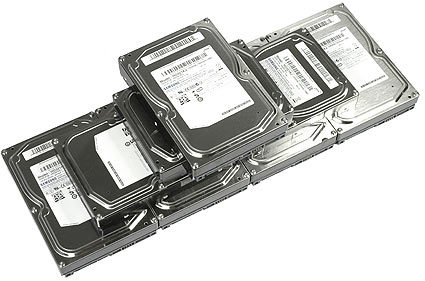RAID Scaling Charts, Part 1
Conclusion
Creating the ideal environment for a high-performance RAID array isn’t just a matter of grabbing components and putting together a test system. Our workstation-class system with Areca’s ARC-1220 SATA RAID controller might be a perfect platform on paper, but it maxes out at less than 500 MB/s interface bandwidth, less than 400 MB/s read speed, and 275 MB/s write speed. Using five hard drives will give you maximum RAID 0 performance for this given system. However, we’re sure that a RAID solution on a different platform, or one optimized for RAID 0, could scale up even more. Part 2 of this article will show that the Areca controller has actually been fine-tuned for RAID 5 and RAID 6 operation, not RAID 0 and RAID 1.
The test system provided an ideal basis for exceptional results in our I/O benchmarks, as each added hard drive increased performance quite a lot. Clearly, Areca’s ARC-1220 is very well suited for database applications or environments with high I/O loads.
Although data transfer rates scaled up nicely with a handful of hard drives, the average access time clearly suffered from the high drive count. Depending on the head position of each drive, the access time in a RAID array is close to the longest access time of all the drives, plus protocol overhead. As a result, a drive array with multiple hard drives doesn’t make a lot of sense for high-end enthusiast PCs. Using Flash-based hard drives might be a wiser choice for high-performance arrays in the near future. In the meantime, selecting WD’s 10,000 RPM Raptor can shorten access times, though at a high cost.
Join our discussion on this topic
Get Tom's Hardware's best news and in-depth reviews, straight to your inbox.

Patrick Schmid was the editor-in-chief for Tom's Hardware from 2005 to 2006. He wrote numerous articles on a wide range of hardware topics, including storage, CPUs, and system builds.
